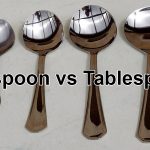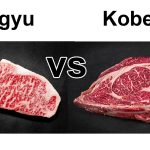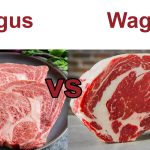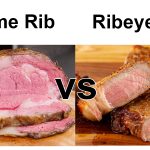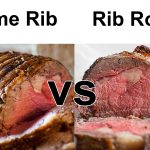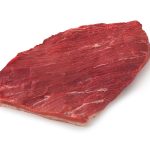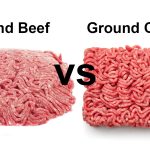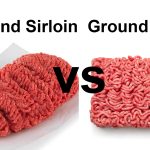When it comes to selecting your favorite cuts of meat, there’s no denying that the difference between Prime and Choice can be overwhelming. From the marbling of fat to flavor, texture, and price points the differences are vast!
For steak connoisseurs and amateur chefs alike, understanding the nuances between these two options is critical in making an informed purchase decision when shopping for steaks.
In this blog post, we’ll explore everything you need to know about Prime vs Choice so that you can make sure you get a delicious cut of steak every time!
What Is Prime?
Prime beef is the highest grade of steak available. It has a rich marbling of fat dispersed throughout the meat, which gives it incredible flavor and tenderness. Prime steaks are usually aged for 14 to 28 days, resulting in superior quality and taste. This type of steak is most often found in high-end restaurants or specialty butcher shops as it is typically more expensive than other cuts due to its higher quality and greater demand.
Prime Nutrition Facts:
Serving size – 1 scoop (14.8g)
– Calories – 57
– Total Fat – 0g
– Cholesterol – 0mg
– Sodium – 83mg
– Potassium – 89mg
– Total Carbohydrates – 5g
– Dietary Fiber – 0g
– Sugars – 0g
– Protein – 2g
– Vitamin A – 0% DV*
– Vitamin C – 0% DV*
– Calcium – 7% DV*
– Iron – 4% DV*
*Percent Daily Values are based on a 2,000 calorie diet. Your daily values may be higher or lower depending on your calorie needs.
What Is Choice?
Choice beef is the second highest grade of steak available and is still quite flavorful, although it doesn’t have quite as much marbling as Prime steaks do. It typically has a good flavor, but may be slightly tougher than Prime cuts due to its lower fat content. Choice steaks are usually aged for 7 to 14 days and are more affordable than Prime, making them an attractive option for many home cooks or those on a budget.
Choice Nutrition Facts:
– Serving size – 1 scoop (14.8g)
– Calories – 56
– Total Fat – 0g
– Cholesterol – 0mg
– Sodium – 79mg
– Potassium – 146 mg
– Total Carbohydrates – 6g
– Dietary Fiber – 0g
– Sugars – 2g
– Protein – 3g
– Vitamin A – 28% DV*
– Vitamin C – 24% DV*
– Calcium – 8% DV*
– Iron – 6 % DV*
*Percent Daily Values are based on a 2,000 calorie diet. Your daily values may be higher or lower depending on your calorie needs.
Usda Choice vs Prime
USDA Choice and Prime are the two highest grades of beef available in the United States. USDA Choice is the most commonly found grade of beef in grocery stores across America. It is typically a very high quality cut, but may not be as tender or juicy as prime grade beef.
Prime grade beef is a step above Choice and has a higher proportion of marbling (intramuscular fat) which makes it more flavorful and tender than Choice. Prime grade beef is often more expensive than Choice, but it can make a big difference when preparing certain dishes like steaks or roasts. Both grades are excellent for grilling, but Prime will give you that extra flavor and juiciness that sets it apart from other cuts of beef.
What Is The Difference Between Prime and Choice?
The main differences between Prime and Choice steaks come down to flavor, tenderness, and price. Prime steaks have a greater marbling of fat which gives them their distinguishable flavor and buttery texture. They are also more expensive due to the increased demand for this higher grade of steak.
7 Differences Between Prime and Choice:
1. Marbling – Prime steaks have more marbling than Choice, which gives them a richer flavor and more tender texture.
2. Fat Content – Prime steaks have a higher fat content than Choice, which contributes to their flavor and texture.
3. Taste – The taste of the steak depends on its marbling and fat content, so Prime will often be richer in flavor compared to Choice.
4. Aging – Prime steaks are aged for 14 to 28 days whereas Choice is aged for 7 to 14 days.
5. Price – Prime steaks usually cost more than Choice due to their superior quality and greater demand.
6. Availability – Prime steak is typically found only in high-end restaurants or specialty butcher shops while Choice can be found in most supermarkets or grocery stores.
7. Nutrition – While both types of steak provide similar nutritional benefits, Prime has slightly higher amounts of fat, cholesterol, sodium, potassium, and vitamin A.
On the other hand, Choice steaks are slightly less flavorful but still retain some of that delicious beefiness thanks to its lower fat content. They are often more affordable than Prime cuts making them a great option for those on a budget or looking for an everyday meal.
Similarities of Prime vs Choice:
1. Both types of steak are high in protein, iron and other vitamins and minerals that are important for a healthy diet.
2. Both types of steak are low in fat and calories, making them an excellent option for those looking to cut back on their caloric intake.
3. Both types of steak can be cooked in a variety of ways, including grilling, broiling or pan-frying.
4. Both Prime and Choice steaks can be used in any recipe calling for beef, from stew to burgers or tacos.
5. Similarly, both types of steak can also be served with a variety of accompaniments such as mashed potatoes, grilled vegetables or salad greens.
6. Nutritionally, there is not much difference between Prime and Choice – both provide similar nutritional benefits.
7. Both types of steak require proper preparation to achieve the best flavor and texture.
Prime vs Choice: Which Is Better?
The choice between Prime and Choice steaks largely depends on your budget, flavor preference, and cooking style. Generally speaking, Prime cuts are more expensive due to their higher fat content and intense flavor. For those looking for an everyday meal or a steak on a budget, Choice is usually the better option. However, if you enjoy the buttery texture of Prime steaks or prefer a richer flavor in your beef dishes, then opting for the Prime cut might be worth it. Ultimately, both types of steak can offer great flavor when cooked properly so it’s really up to you to decide which one works best for you!
Which is Healthier: Prime vs Choice?
Both Prime and Choice steaks offer a variety of health benefits such as protein, iron, vitamins and minerals. However, due to its higher fat content, Prime steaks have slightly more calories than Choice. Similarly, the fat content also makes them higher in saturated fats and cholesterol. That said, if you are looking for a leaner option then Choice is usually the healthier choice. Additionally, both types of steak provide important nutrients such as zinc, selenium and Vitamin B12; making them an excellent source of nutrition for a balanced diet. So regardless of which type you choose Prime or Choice you’ll be getting great quality beef with valuable nutritional value.
Prime vs Choice: Cooking Tips & Suggestions
When it comes to cooking Prime vs Choice steaks, there are a few key considerations. Firstly, due to its higher fat content, Prime steak requires more care when cooking to ensure that the fat does not become overly charred or greasy. To help prevent this, it’s best to cook Prime steaks over low heat and in an oiled pan (such as olive oil) until they reach your desired doneness.
In contrast, Choice steaks can generally be cooked at higher temperatures without worrying too much about overcooking the fat. This makes them ideal for quick-cook methods such as grilling or broiling. Also, since Choice steaks have less flavor intensity than Prime cuts you may want to add a marinade or rub before cooking to help bring out the flavors.
Overall, both Prime and Choice steaks can offer delicious flavor if cooked properly. So no matter which type of steak you choose, with the right preparation and attention to detail you’ll be sure to get a satisfyingly tasty meal!
Where to buy USDA Prime beef
If you’re looking for the highest grade of beef available, then USDA Prime is the way to go. To ensure that you are getting top quality steak, it’s best to purchase your steaks from a reputable butcher or specialty market. However, if you don’t have access to a local butcher or specialty market, many grocery stores and online retailers also offer high-quality USDA Prime beef. No matter where you get your steaks from be sure to check the label for the USDA Prime designation before making your purchase. This will guarantee that you are getting only the best quality steak!
Prime vs Choice Recipes:
Both Prime and Choice steaks provide delicious flavor when cooked properly. Here are a few recipes that make the most of both types of steak:
For Prime Steak:
– Prime Rib Roast with Garlic Crust
– Pan-Seared Prime Steak with Balsamic Reduction Sauce
– Marinated Grilled Prime Flank Steak
For Choice Steak:
– Skillet Seared Choice Steak with Mushroom Sauce
– Grilled Teriyaki Choice Flat Iron Steak with Sesame Vegetables
– Oven Braised Choice Pot Roast with Red Wine Gravy
FAQs:
Q: What is the difference between Prime and Choice steaks?
A: The main difference between Prime and Choice steaks is in the fat content. Prime cuts generally have more marbling (intramuscular fat) than Choice, which makes them higher in calories and saturated fats. Additionally, Prime steak also has a bolder flavor that some may find preferable to the milder taste of Choice steaks.
Q: Is one type of steak healthier than the other?
A: While both types of steak offer similar nutritional benefits, due to its lower fat content Choice is usually considered to be the healthier option. However, if you are looking for an indulgent dinner then Prime might be better suited as it offers a more intense flavor profile.
Q: How should I cook Prime vs Choice steaks?
A: Prime steaks require lower heat and an oiled pan for optimal cooking results. For Choice steaks, higher temperatures can be used as well as marinades or rubs to bring out the flavors. Ultimately, proper preparation of either type will help ensure that you get the best steak experience possible!
Conclusion:
The choice between Prime and Choice steaks largely depends on personal preference and budget. Generally speaking, Prime cuts are pricier due to their higher fat content, while Choice is a more economical option. Both types of steak provide various health benefits as well as high-quality protein, iron, vitamins and minerals; making them an excellent source of nutrition for a balanced diet. When it comes to cooking, Prime and Choice steaks require different preparation depending on the desired texture and flavor. With proper care and attention to detail, both types of steak can offer delicious results when cooked properly!
References

William Lariviere is a chef and restaurateur with over 25 years of experience in the food industry. He is the owner and operator of Swartzsdeli.com, an online restaurant that specializes in gourmet sandwiches and salads, grill & smoke. He likes to share experience, food, recipes cooking knowledge as well as reviews about restaurant and kitchen products.
William’s goal is to provide his customers with healthy, delicious food that is also affordable and develop Swartzsdeli.com into a comprehensive information site specializing in cooking and cuisine to a new level to help reach a wide range of housewives and readers.

